We were searching for a little r’n’r – with a dash of history on the side. What we got was a close encounter of the rattler kind and storm of the sesquicentennial. Ma Nature went all out with a noisy and bright light show for Canada’s 150th before we launched two canoes and a single kayak at an old ferry site on the South Saskatchewan River.
Disclosure: This post contains affiliate links. If you buy something from one of our affiliates, we receive a small commission at no extra charge to you. Thanks for helping to keep our blog up and running!
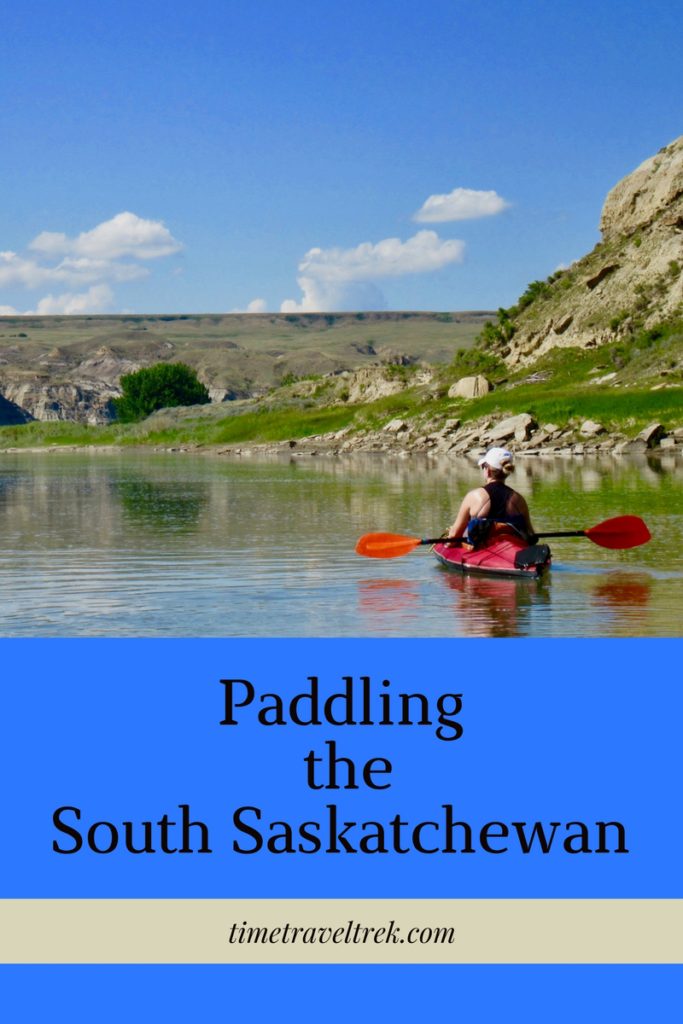
Table of Contents
Journey Back in Time
Since it was Canada’s 150th year, we decided to forgo modern forms of transport for a couple of days and paddle our way back into history – before planes, trains and automobiles – back to a time even before this great country called Canada came into existence.
Our starting place was the old Bindloss Ferry site, five kilometres (3 miles) downstream of Canadian Forces Base (CFB) Suffield.
It is an especially good put-in point because the crumbling remains of a concrete approach for the ferry crossing was perfect for sorting gear away from the mud.
Because it’s early July, the river levels are dropping. Spring melt is pretty much done, therefore making canoeing and gravel bar camping a little easier.
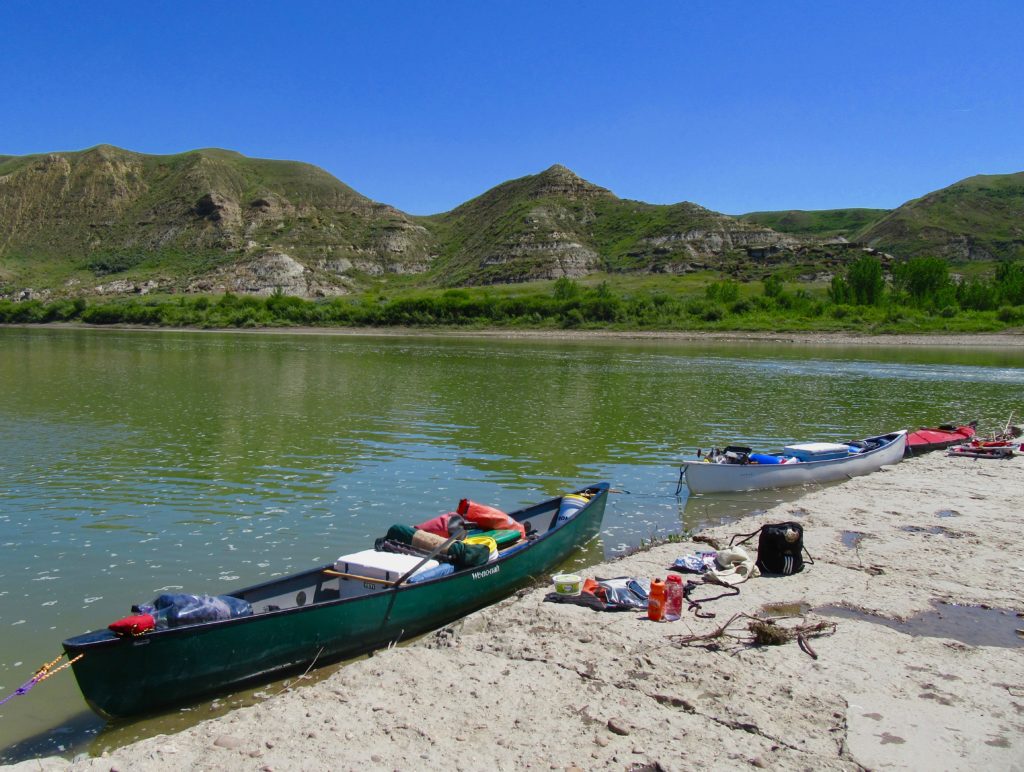
Day one’s route would take us on a gentle, approximately 21 km (13 mi) float down through the coulees of the Middle Sand Hills. We drifted past deer grazing along the still-green grasslands. Beaver floated the waterways. Cliff swallows dipped into riverbank mud to build their clay castles in rocky outcrops.
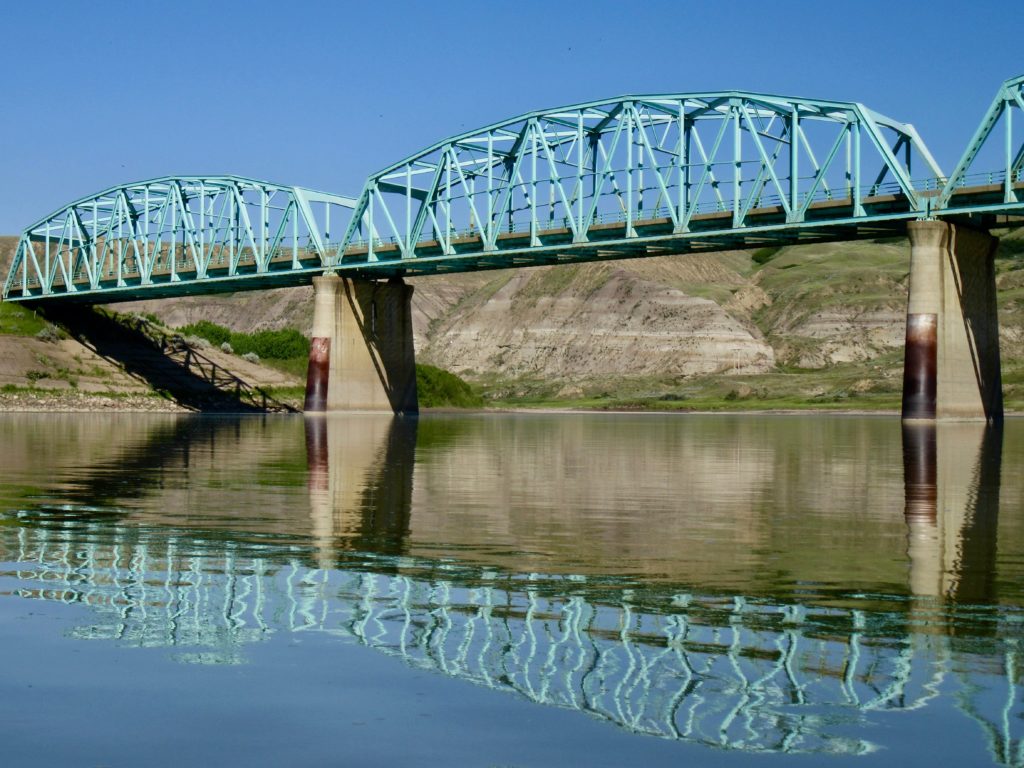
We continued to a point just below Sandy Point bridge and its established but busy campground where an open sand and gravel and rattlesnake-free shoreline became home for the night.
It is perfection overall. Nighthawks serenade from above as we sit riverside, watching the sky turn golden.
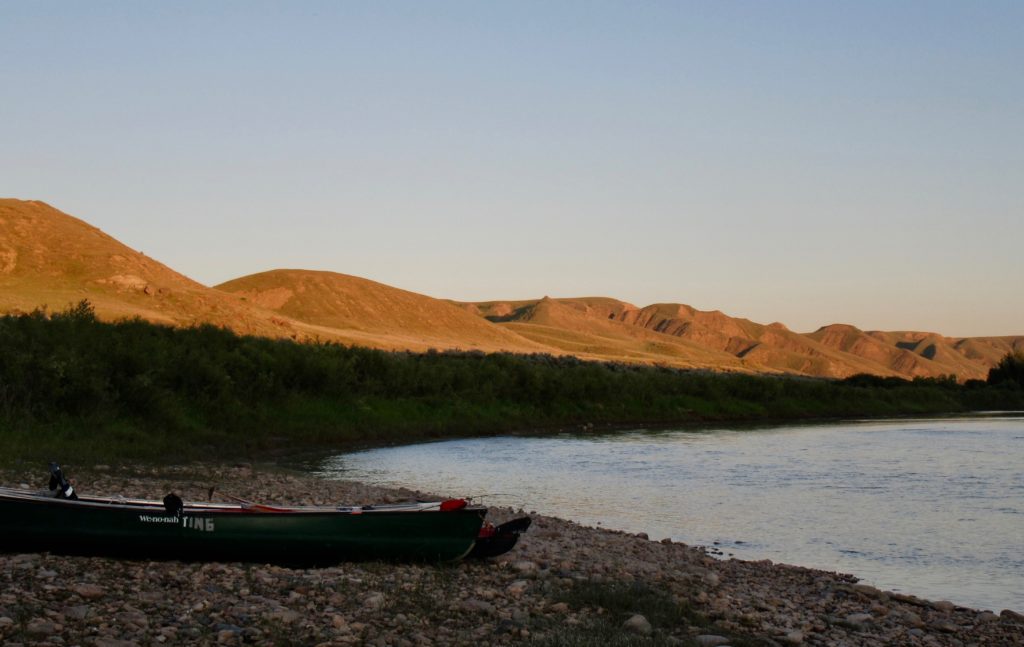
Day Two Paddling the South Saskatchewan River
Our second day – since we had almost 32 km (20 mi) of river travel – should have felt a little more difficult.
A light push of the wind, the warmth of the sun and the catch and release of sauger – tiny fish in comparison to the massive sturgeon that inhabit the South Saskatchewan River – had us drifting along without much of a worry.
During the day’s paddle, we popped back and forth along the Alberta/Saskatchewan border as the river meandered effortlessly in a northeastly direction.
Off to the left, a gaggle of geese pulled up onshore as we drifted by. In the distance, three young owls took practice flights in the low trees along the bank. To the right, sandpipers ran along the mudflats. A little further ahead a great blue heron flew effortlessly downstream.



Ma Nature held true to course and gave us a little test of wind in our faces for a short stretch of the journey.
Eventually she relented and came back in from behind and allowed us to drift down using umbrellas as sails.
Ahead in the distance the ghostly abutments of the Canadian Pacific Railway (CPR) bridge that spanned the river in 1914 came into sight.
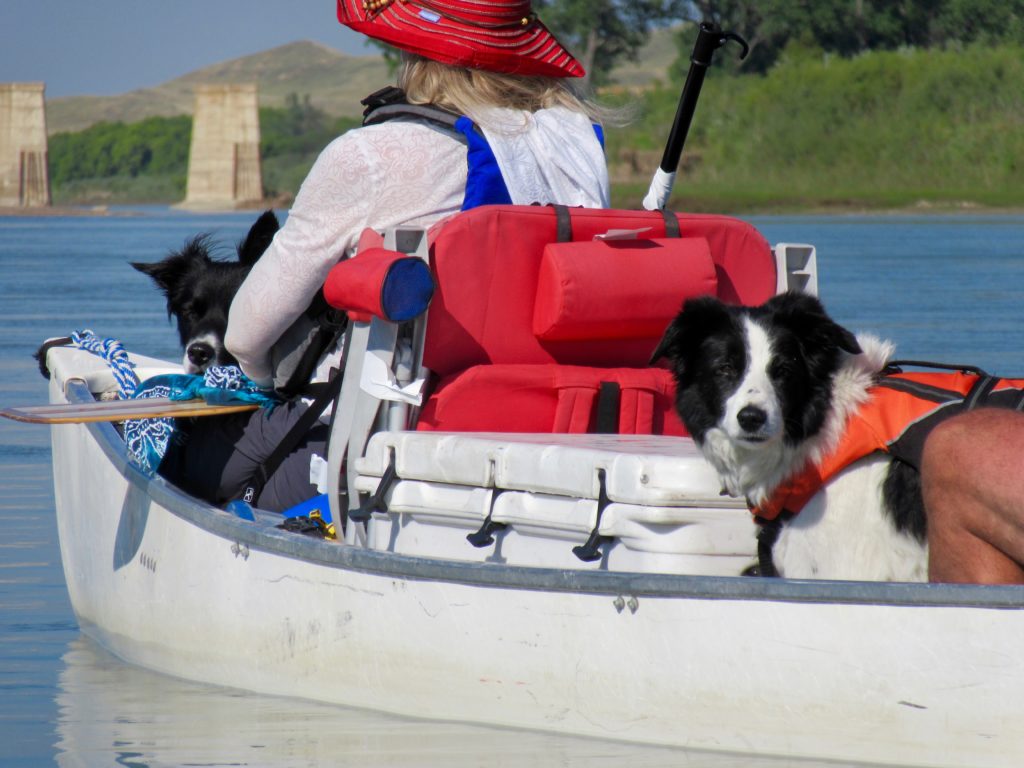
Long abandoned, the concrete pillars on a midstream island provided the perfect backdrop for camp – with ready-built shade.
Unloading quickly, it was all hands in the cooler for happy hour.
As we sit in the shade, deer crisscross the river up and downstream. Beavers swim around us. White pelicans bob in slow upstream eddies. Relaxed?
Oh yeah – nature’s medicine is working its magic!
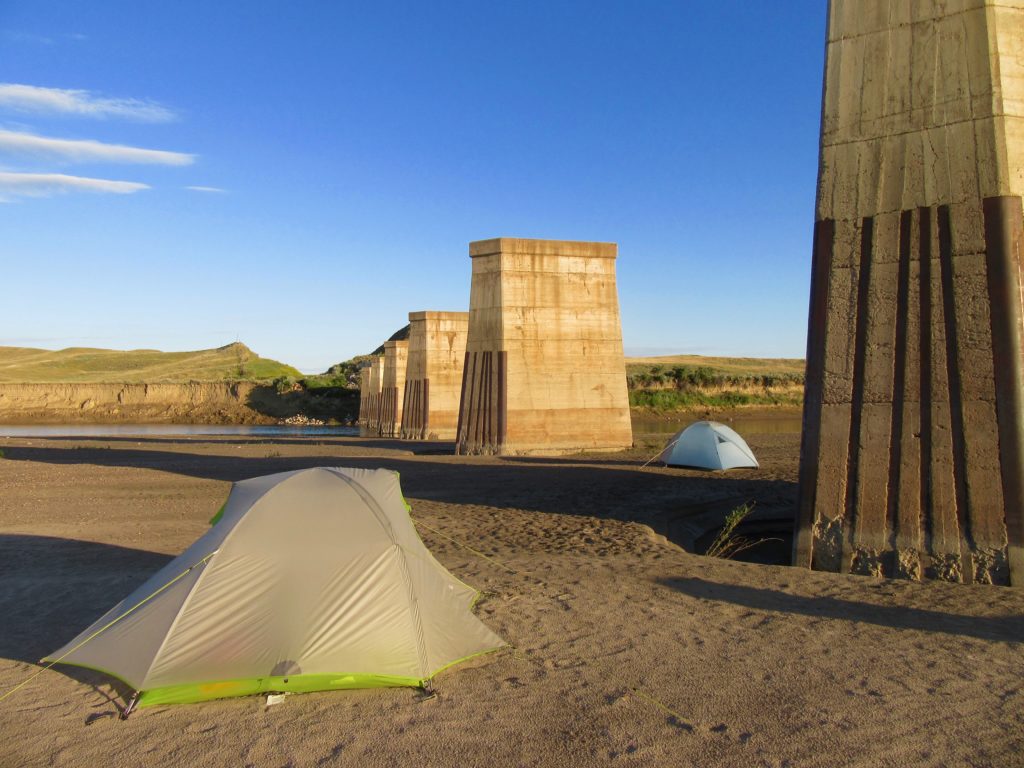
Historic Float to the Pullout
We can hear the meal bell from the nearby Hutterite colony as we prep for a leisurely breakfast. Reluctantly, we load up and drift down past the flood-blasted muddy confluence with Red Deer River.
Even though the channel becomes a wide flat lake for a short stretch and we have to work to find the channel we’re not wanting the trip to come to an end. Tip: stay river right to avoid having to walk on water across the shallow sections.
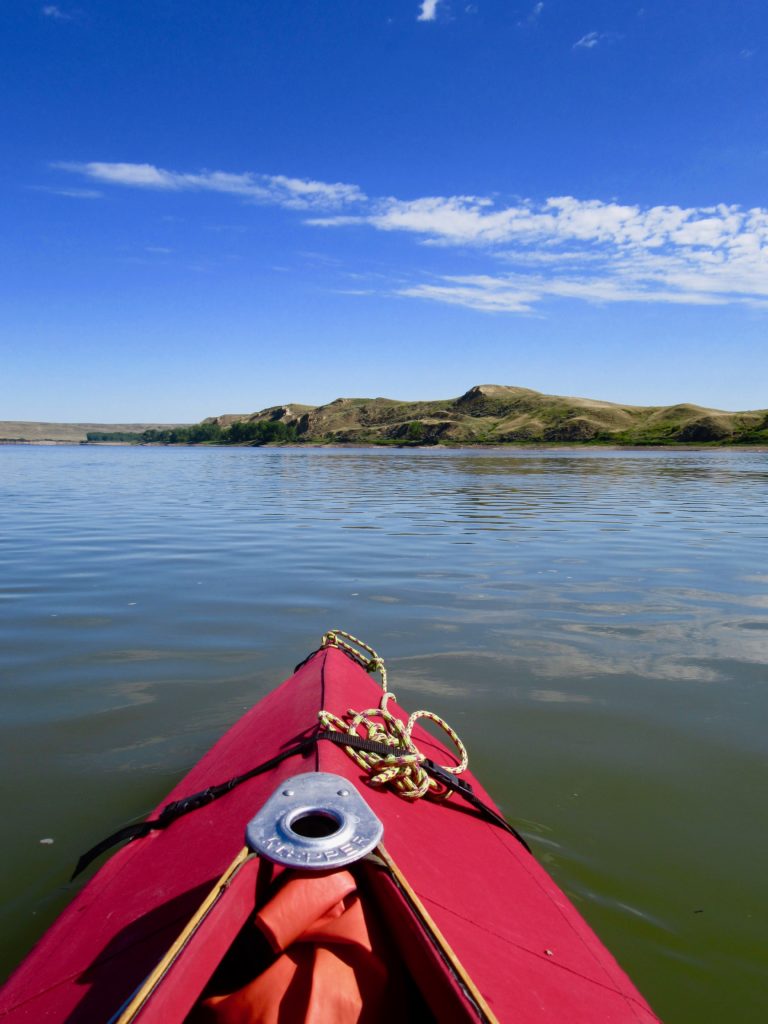
History-lovers Appreciate Peter’s Place
It is somewhere right in here, on river left, that Hudson’s Bay Company (HBC) explorer, surveyor and trader Peter Fidler built Chesterfield House in the fall of 1800.
HBC established the trading post on the South Saskatchewan River to provide competition for the Northwest Company (NWC) and other Canadians trading for fox, wolf, badger and beaver pelts with the Blackfoot, Blood, Peigan and Gros Ventre in southern Alberta.
Somewhere right in here his First Nations wife, Mary Mackegonne, gave birth to their third son George on November 10th of that same year.
Fidler and his family would spent two seasons at the original post before it was abandoned due to increasing tensions with the Gros Ventre.
The post was resurrected in the winter of 1804/05, left for almost another two decades and then rebuilt as a temporary trading post and palisade about seven km (4 mi) downstream of the confluence in 1822. This was the same year Peter Fidler passed away in his post at Fort Dauphin.
In April of 1823, Chesterfield House was abandoned for good. Sadly, there are no visible remains of either trading post, but the fact that we were paddling alongside the past was some kind of Canada cool.
All in all this canoe trip is perfect for nature lovers, history aficionados or anyone seeking a peaceful escape from the hustle and bustle of everyday life.
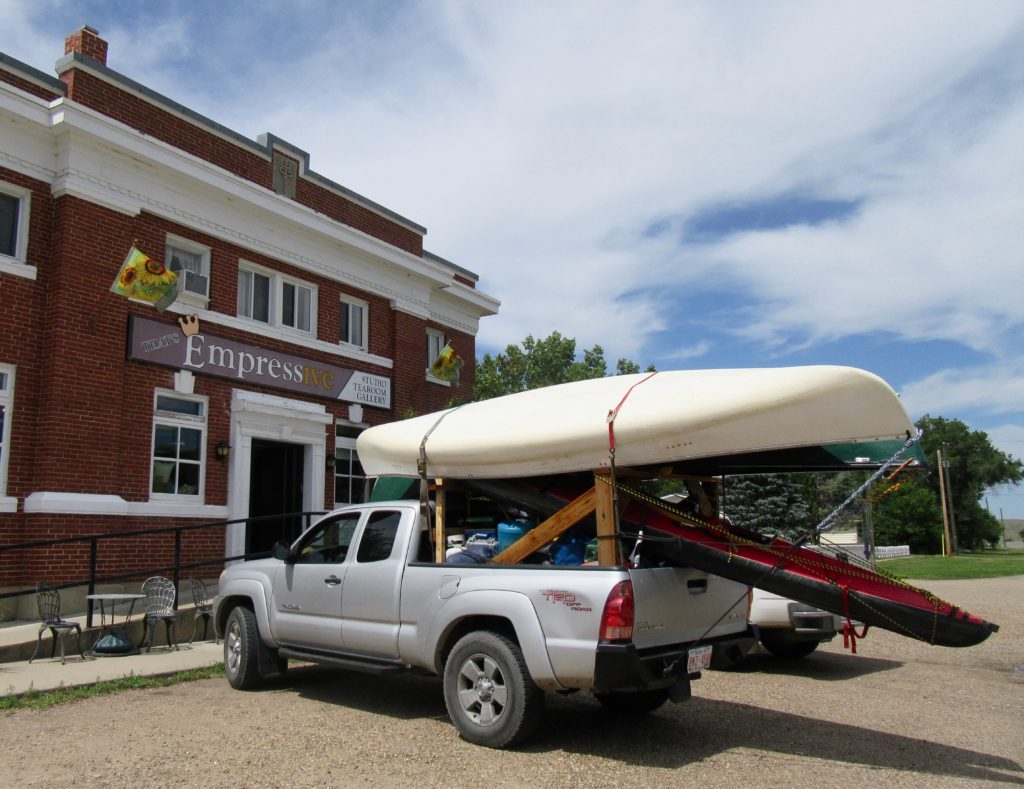
When You Go
- Our trip ran from the Old Bindloss Ferry in Alberta at Km 255 (5 km east of the CFB Suffield boundary) to the Estuary Ferry in Saskatchewan, just past Km 320. We covered 65 km distance on the South Saskatchewan River easily in 2 ½ days.
- We accessed the put-in point at the Old Bindloss Ferry landing on the north side of the river. Range Road 2-3 is graveled down to a band of willows just above the river, but be aware the lower section is not maintained and may have washouts in wet weather.
- A second vehicle was left at the take-out point at the Estuary Ferry (talked with ferry operator to ensure that where it was parked was okay before leaving)
- Buy a copy of Prairie River, by Dawn Dickinson and Dennis Baresco. It may be dated, but the cultural and natural history information and maps inside this small volume are still valuable. You might find it online in books at Paddle Alberta’s store or keep an eye out in used bookstores.
- You can access additional maps online at Alberta River Basins. Flow levels can be monitored by accessing the Alberta Rivers: Data and Advisories Mobile App on this same page.
SaveSave
And if you want more adventure, check out these Alberta river trips!
Canoeing the Oldman River: Monarch to Lethbridge
Canoeing the South Saskatchewan River: Medicine Hat to Sandy Point
Love kayaking. Such a relaxing way to explore a river. This looked like an awesome trip!
Thanks Guy, it was a beautiful float!